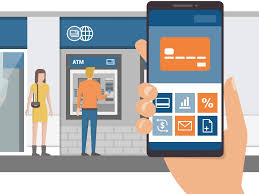What is Digital Onboarding in Banking: 5 Best Benefits

Digital onboarding in banking refers to the process of acquiring and verifying new customers electronically, typically through online or mobile channels, without the need for physical presence or paper-based documentation. It enables individuals to open bank accounts, apply for financial products, and access banking services remotely, making the customer onboarding experience more convenient, efficient, and accessible.
What is Digital Onboarding?
Digital onboarding simplifies and streamlines the registration process for new customers, leading to a more efficient and user-friendly experience. It offers benefits such as improved security, reduced costs, and enhanced customer satisfaction. When considering a digital onboarding solution, it is crucial to thoroughly evaluate the underlying technologies and the provider’s track record. Assessing the reliability, scalability, and security measures of the solution is essential to ensure a successful implementation that aligns with your business objectives.

What is Digital Onboarding in Banking
In the banking context, onboarding digital refers to the automated process of providing customers with access to financial products and services through online channels. It offers customers the convenience of opening accounts, applying for loans, or creating accounts with digital banks without the need for in-person visits or manual paperwork. While it aims to provide a seamless and efficient experience, it still adheres to legal and regulatory requirements to ensure compliance and security.
Here are the key components and benefits of digital onboarding banking:
1. Online Application.
Customers can initiate the onboarding process through a bank’s website or mobile app. They provide their personal information, such as name, address, contact details, and identification documents electronically.
2. Automated Verification.
Banks employ various technologies, such as optical character recognition (OCR), facial recognition, and biometric authentication, to verify the authenticity of customer-provided information. These technologies help ensure compliance with regulatory requirements and reduce the risk of identity theft or fraud.
3. Electronic Signatures.
Digital onboarding allows customers to electronically sign documents, eliminating the need for physical paperwork. This accelerates the process and reduces administrative overhead for both customers and banks.
4. Know Your Customer (KYC) Compliance
Banks are required to comply with KYC regulations to prevent money laundering, terrorist financing, and other illicit activities. Digital onboarding streamlines the KYC process by leveraging data from trusted sources, such as government databases, to verify customer identities and perform risk assessments.
5. Seamless Integration.
Digital onboarding systems can be integrated with various backend systems, including customer relationship management (CRM), core banking, and risk management systems. This integration enables smooth data transfer and provides a unified view of the customer across different banking channels.
6. Enhanced Customer Experience.
Digital onboarding offers a frictionless customer experience by reducing the time and effort required to open accounts or access banking services. Customers can complete the onboarding process at their convenience, anytime and anywhere, using their preferred devices.
7. Cost and Time Efficiency.
By automating manual processes and eliminating paperwork, digital onboarding reduces operational costs and accelerates customer acquisition. Banks can onboard a larger number of customers in a shorter timeframe, improving their competitiveness and market reach.
8. Cross-Selling Opportunities.
During the onboarding process, banks can leverage customer data and analytics to offer personalized product recommendations and targeted cross-selling opportunities. This helps drive customer engagement, increase product adoption, and enhance revenue generation.
Digital onboarding solutions for banks
A flexible and global identity verification solution that combines these elements can help businesses strike a balance between user experience and compliance with regulatory requirements.
By combining various verification methods such as document verification, biometric verification, data verification, and fraud detection signals, businesses can efficiently confirm the identities of customers in a short period.
Matching a photo ID to facial biometrics provides an additional layer of identity validation, ensuring compliance with KYC requirements. By incorporating checks for politically exposed persons (PEPs), sanctions lists, adverse media, and proof of address, businesses can fulfill their AML obligations.
The integration of artificial intelligence and machine learning techniques, such as document classification and micro-model fraud detection, assists in identifying fraudulent documents or biometrics, further enhancing security and preventing potential fraud.
Note: When selecting digital onboarding solutions, banks should consider factors such as scalability, security, regulatory compliance, user experience, and the ability to integrate with existing infrastructure. It is essential to choose solutions that align with the bank’s specific needs and provide a secure and efficient onboarding experience for customers.
Digital Customer Onboarding Process
Electronic onboarding plays a crucial role in helping regulated industries, such as banking and finance, comply with KYC and AML regulations more effectively. By leveraging advanced identity verification tools and automation, digital onboarding simplifies the process of verifying customer data and conducting security checks.
Compared to manual processing, electronic onboarding significantly reduces the chances of errors and non-compliance. Automated identity verification processes, such as scanning IDs and cross-checking them with government databases, enable quick and accurate verification of customer information. This ensures that the organization is dealing with legitimate customers and helps mitigate the risk of money laundering and fraudulent activities.
In addition to improving compliance, digital onboarding also enhances operational efficiency by saving time, reducing paperwork, and streamlining the onboarding process for customers.
The digital onboarding process mirrors the offline customer onboarding process, but it takes place entirely in the digital realm, with all the steps and interactions occurring online or through digital channels.
The customer onboarding process typically looks like this:
- Signing up
- Identity verification
- Product setup

Digital onboarding has the potential to significantly improve conversion rates for organizations, with studies suggesting increases of up to 50%. Organizations that do not implement digital onboarding may retain only around 40% of potential customers.
1. Client-centered approach
Indeed, digital onboarding offers a client-oriented approach by providing customers with the flexibility to onboard at their convenience, regardless of time and location. By eliminating the need for physical visits to offices, digital onboarding saves customers time and effort, enhancing their satisfaction with the process. Moreover, in the context of the post-pandemic era, a touch-free workflow adds an extra layer of safety, further boosting customer confidence and loyalty to the brand.
2. Time and cost-effectiveness
Digital onboarding offers significant cost-saving advantages compared to on-site onboarding. By automating administrative tasks and streamlining the process, digital onboarding reduces the time spent by employees on manual form filling and customer data verification. This improved efficiency translates into cost savings by allowing organizations to optimize their workforce and allocate resources more effectively. The study by Oliver Wyman highlighting the cost difference between digital onboarding ($30) and traditional bank onboarding ($150) further emphasizes these cost-saving benefits.
3. Improved accuracy
Digital onboarding eliminates many errors associated with manual data entry by leveraging software tools. Automated digital forms can detect and flag incorrect responses, allowing for timely resolution. Moreover, specialized ID document data parsing tools accurately identify document types and extract relevant information, ensuring consistency across systems. This reduction in human error contributes to a more accurate and efficient onboarding process.
4. Increased security
5. Increased retention
remote customer onboarding has shown to be an effective way to attract and retain customers. In the digital era, electronic onboarding processes can serve as a crucial competitive advantage in the market. Customer experience plays a significant role, with studies indicating that 35% of customers switched their banking provider in pursuit of a better user experience, as highlighted in the 2022 SalesForce Future of Financial Services report. Providing a seamless and user-friendly onboarding experience is essential for customer satisfaction and loyalty.
Digital Employee Onboarding

Digital employee onboarding eliminates the need for in-person courses, training sessions, or meetings by leveraging tools and technology. This approach offers benefits such as increased efficiency, cost reduction, and greater convenience for both the organization and new hires.
Here are some key aspects of digital onboarding for employees:
- Online Documentation and Forms: New employees can complete necessary paperwork, such as employment contracts, tax forms, and benefits enrollment, through online portals or document management systems.
- Virtual Training and Onboarding Materials: These resources can be accessed remotely, allowing new hires to learn at their own pace and review the materials as needed.
- Digital Communication and Collaboration Tools: This facilitates effective communication, collaboration, and access to necessary information without the need for in-person interactions.
- Online Employee Portals: Employee portals or intranet platforms provide centralized access to important information such as company policies, procedures, employee handbooks, and FAQs.
- Task and Workflow Management: This helps ensure that all necessary steps are completed and provides visibility into the progress of the onboarding process.
- Automation and Integration: Digital employee onboarding can integrate with other HR systems, such as payroll and performance management software, this reduces manual data entry and improves overall efficiency.
- Feedback and Evaluation: Digital employee onboarding systems may include mechanisms for collecting feedback from new hires, allowing organizations to assess the effectiveness of their onboarding processes and make improvements based on the input received.
Proper digital onboarding for the employee is crucial for helping new hires understand their roles, integrate into their teams, and align with the goals and culture of the organization. Inadequate onboarding can lead to feelings of disengagement and a lack of clarity, which can ultimately impact productivity and possibly result in employee attrition. Investing in effective onboarding sets the stage for long-term employee success and satisfaction.
What are the challenges of digital onboarding?
The first challenge is the potential lack of human connection that can occur when onboarding customers remotely. Companies need to find ways to maintain a personal connection and foster customer relationships despite the absence of face-to-face interaction.
The second challenge is the implementation of efficient processes to ensure a smooth transition from traditional identity verification methods to online onboarding. This involves adopting streamlined and user-friendly processes that make the verification and onboarding experience seamless for customers.
Addressing these challenges is crucial to delivering a positive and engaging digital onboarding experience while maintaining high levels of customer satisfaction.




